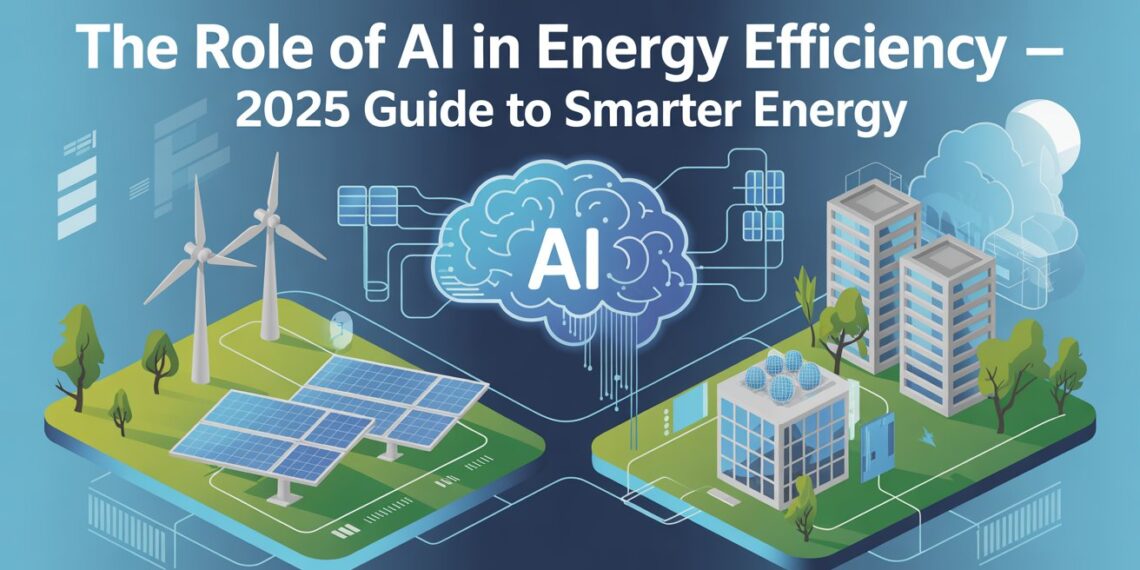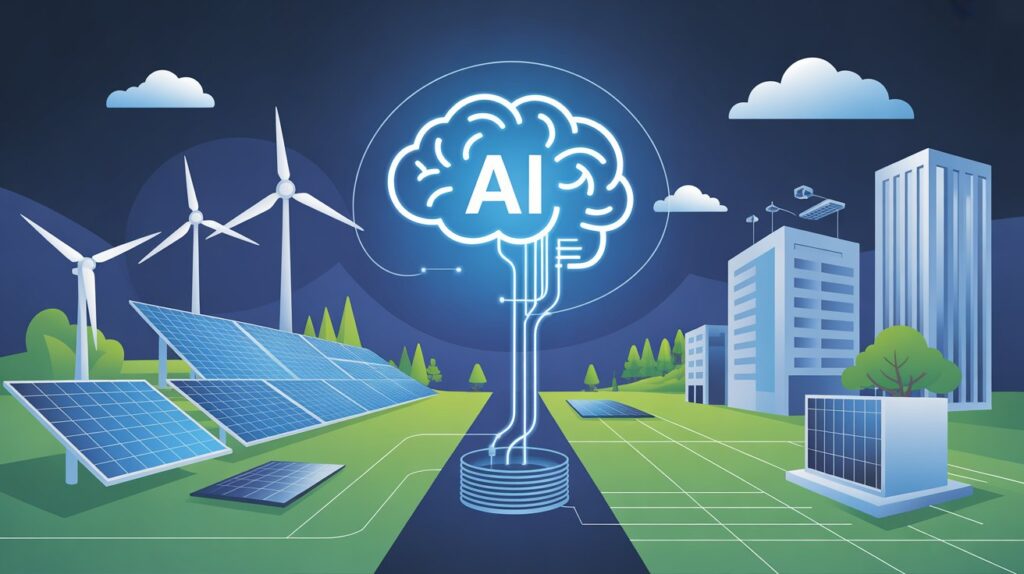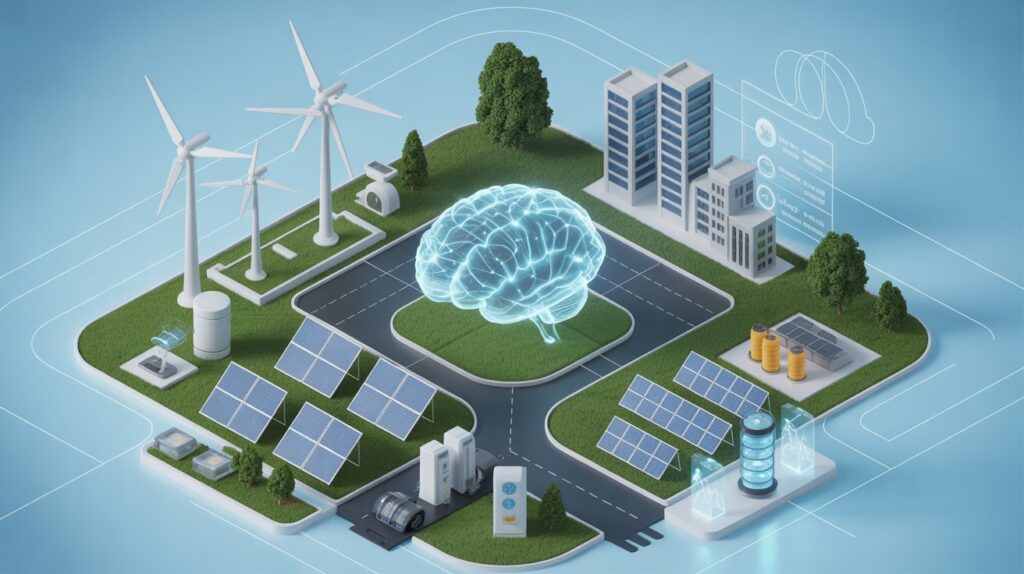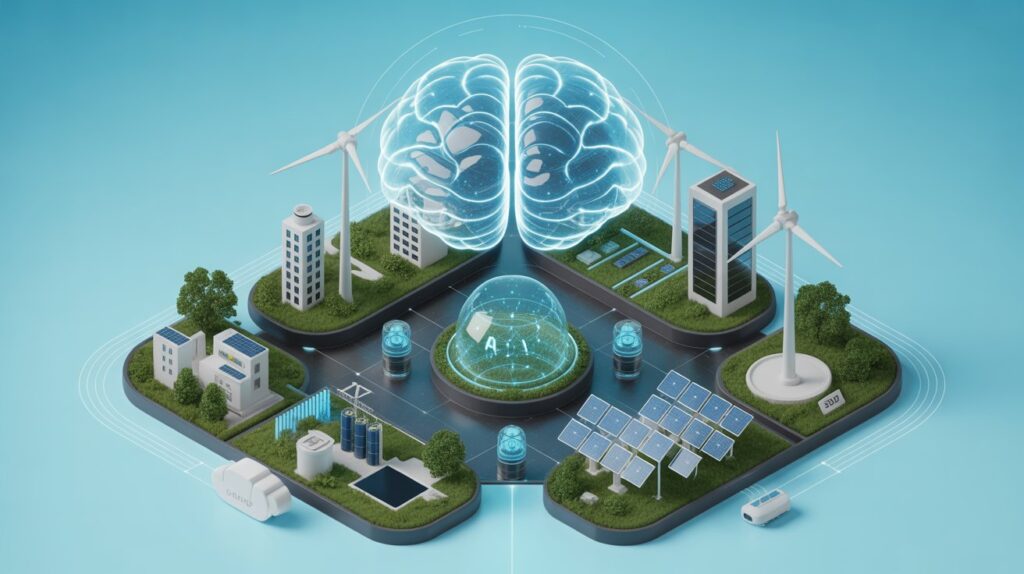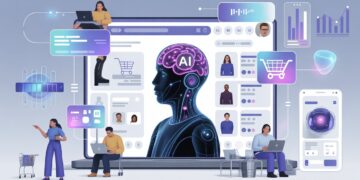The global energy landscape is at a turning point. With rising energy demands, increasing costs, and the urgency of climate change, businesses and governments alike are seeking smarter ways to manage consumption and reduce waste. Amid this transformation, artificial intelligence (AI) has emerged as one of the most powerful tools for improving energy efficiency.
From optimizing industrial processes to predicting energy demand and managing renewable resources, AI technologies are reshaping how we produce, distribute, and consume energy. This article explores The Role of AI in Energy Efficiency, examining how it drives sustainability, lowers costs, and accelerates the global transition toward cleaner energy systems.
Understanding Energy Efficiency in the Modern Era
Energy efficiency refers to using less energy to perform the same task—delivering services such as lighting, heating, or manufacturing with minimal waste. It’s not only about conservation but about smarter utilization of resources.
In traditional systems, energy management often relied on static models, manual monitoring, and reactive maintenance. Today, AI enables dynamic, data-driven optimization—allowing energy systems to “learn,” adapt, and predict in real time. This evolution has profound implications for both sustainability and profitability.
The Role of AI in Energy Efficiency: An Overview
Artificial intelligence transforms energy efficiency through automation, prediction, and intelligent control. Its ability to process massive datasets, recognize patterns, and adapt continuously makes it indispensable for modern energy systems.
Key ways AI contributes include:
-
Predictive analytics for demand forecasting and load balancing.
-
Real-time monitoring of equipment to prevent energy loss.
-
Optimization algorithms for resource allocation and grid management.
-
Automation in industrial processes to minimize waste and downtime.
In essence, AI bridges the gap between human decision-making and complex energy systems—delivering efficiency gains that were previously unattainable.
AI Applications Across the Energy Value Chain
1. Smart Grids and Demand Forecasting
AI-driven smart grids are revolutionizing electricity management. By analyzing consumption data, weather forecasts, and grid performance, AI models can accurately predict energy demand and supply fluctuations.
This enables utilities to:
-
Balance loads more effectively.
-
Prevent outages and blackouts.
-
Integrate renewable sources seamlessly.
For example, machine learning algorithms can anticipate peak usage hours, automatically shifting non-critical loads or triggering energy storage systems. As a result, energy distribution becomes more stable and efficient.
2. Industrial and Manufacturing Optimization
Industrial facilities are among the largest energy consumers globally. AI helps them reduce waste by analyzing sensor data from machines, identifying inefficiencies, and predicting maintenance needs before failures occur.
Key benefits include:
-
Automated control of heating, ventilation, and cooling systems.
-
Real-time process optimization for production lines.
-
Anomaly detection to reduce downtime and waste.
Companies like Siemens and GE are already deploying AI-driven platforms that cut energy costs by up to 20% through predictive maintenance and smart scheduling.
3. AI in Buildings and Smart Cities
Buildings account for roughly 30% of global energy consumption. AI can transform this sector through adaptive systems that continuously learn and adjust to occupant behavior, external temperature, and energy tariffs.
Applications include:
-
Smart HVAC systems that regulate temperature based on occupancy.
-
Automated lighting and appliance controls.
-
Building energy management systems (BEMS) that optimize electricity use in real time.
Smart cities extend these principles further—using AI to manage public lighting, electric vehicle charging, and waste collection routes. The result is reduced energy use, lower emissions, and a more sustainable urban environment.
4. Integration of Renewable Energy Sources
One of the most complex challenges in modern energy management is integrating intermittent renewable sources like solar and wind into the grid. AI provides the intelligence needed to forecast generation, predict weather patterns, and manage variability.
For example:
-
Neural networks forecast solar radiation and wind speeds to adjust grid operations proactively.
-
Reinforcement learning algorithms determine the optimal use of energy storage systems.
-
AI systems dynamically allocate renewable power where it’s most needed.
These capabilities enhance reliability, reduce curtailment, and maximize renewable utilization—accelerating the path to a low-carbon economy.
5. AI for Energy Storage Management
Efficient storage is the backbone of energy reliability. AI optimizes battery operations by predicting demand spikes and scheduling charge/discharge cycles.
This helps:
-
Extend battery life.
-
Improve storage efficiency.
-
Reduce operational costs.
When applied to large-scale grid storage, AI can decide when to store excess renewable energy and when to release it—ensuring optimal use and reduced dependency on fossil-based backup systems.
6. Energy Efficiency in Data Centers
Ironically, AI itself consumes vast amounts of energy—especially in large data centers. However, AI is also the key to reducing that footprint.
By analyzing temperature, workload, and airflow data, AI systems can automatically adjust cooling mechanisms and server allocation. Google, for instance, used DeepMind’s AI to reduce cooling energy use in its data centers by up to 40%.
As digital transformation accelerates, AI-enabled energy optimization will be vital in ensuring that technological growth remains sustainable.
Techniques and Technologies Powering AI Energy Solutions
Machine Learning and Predictive Modeling
Machine learning (ML) algorithms analyze historical data to predict future trends—such as demand peaks or machine failures. This predictive ability allows for proactive energy management and resource allocation.
Deep Learning and Neural Networks
Deep learning models can process complex, non-linear relationships in massive energy datasets. These models are particularly useful for forecasting renewable output or detecting inefficiencies in industrial processes.
Reinforcement Learning
Reinforcement learning enables AI systems to “learn by doing.” For example, an AI controller can continuously test and refine HVAC settings in a building to find the most energy-efficient configuration.
Edge AI and IoT Integration
By embedding AI directly into sensors and IoT devices, decisions can be made locally and instantly. This reduces latency and bandwidth use, while enabling real-time energy adjustments in smart grids or factories.
Challenges and Considerations
Despite its promise, deploying AI for energy efficiency comes with challenges:
Data Availability and Quality
AI systems require vast amounts of accurate data. Incomplete or inconsistent data can lead to unreliable predictions or suboptimal results.
Integration with Legacy Systems
Many utilities and industries still rely on outdated infrastructure. Integrating AI into these systems demands significant investment and technical coordination.
Energy Cost of AI Itself
AI training and computation consume substantial energy. The paradox lies in ensuring that AI’s benefits outweigh its environmental costs—a challenge researchers are actively addressing through more efficient algorithms and hardware.
Ethical and Governance Issues
Transparency, data privacy, and algorithmic accountability are increasingly important. Decision-makers must ensure that AI’s use in energy management aligns with regulatory and ethical standards.
Real-World Case Studies
Smart Buildings: BrainBox AI
BrainBox AI uses self-learning algorithms to optimize HVAC systems in commercial buildings. Clients report up to 25% reductions in energy costs and significant emission savings, showcasing how autonomous systems can enhance both efficiency and sustainability.
Smart Grids: Iberdrola’s Predictive Operations
European energy giant Iberdrola employs AI to forecast energy demand and grid stress points. The system allows real-time adjustments, reducing energy losses and improving grid resilience.
Industrial Optimization: Shell’s Predictive Maintenance
Shell integrates AI to monitor equipment across refineries and plants. Predictive analytics detect inefficiencies and schedule maintenance proactively, cutting energy waste and unplanned downtime.
Future Outlook: AI and the Global Energy Transition
The next decade will see AI move from pilot projects to widespread deployment in energy systems worldwide. Key future developments include:
1. AI-Driven Decentralized Grids
Peer-to-peer energy trading platforms, powered by AI, will allow consumers to buy and sell renewable energy locally—improving efficiency and reducing transmission losses.
2. Climate-Aware AI Models
New AI frameworks are being designed to account for carbon footprints and environmental impact during model training and deployment.
3. Integration with Quantum Computing
Quantum AI promises to accelerate optimization and simulation tasks that are currently computationally intensive, offering massive efficiency gains for complex systems.
4. Policy and Regulation Evolution
Governments are increasingly recognizing the role of AI in achieving sustainability goals. Future policies are likely to incentivize AI-driven energy optimization and enforce transparency in algorithmic decision-making.
FAQs About The Role of AI in Energy Efficiency
1. What is the main role of AI in energy efficiency?
AI helps organizations monitor, predict, and optimize energy usage through real-time data analysis and automation, reducing waste and improving sustainability.
2. Which sectors benefit most from AI energy solutions?
Industries, utilities, commercial buildings, and smart cities all see significant energy savings through AI-powered optimization systems.
3. Does AI itself consume a lot of energy?
Yes, training large AI models requires energy, but ongoing advances in hardware efficiency and carbon-aware computing aim to reduce its footprint.
4. How does AI improve renewable energy integration?
AI forecasts generation from solar and wind sources, balances supply and demand, and manages energy storage to ensure consistent power availability.
5. What are the main challenges in implementing AI for energy efficiency?
Challenges include data quality, infrastructure compatibility, high implementation costs, and the energy consumption of AI itself.
Conclusion
As the world moves toward a sustainable and low-carbon future, artificial intelligence stands at the forefront of innovation. From smart grids to intelligent factories and self-learning buildings, AI enables precise, predictive, and automated energy management across every sector.
Understanding The Role of AI in Energy Efficiency is no longer optional—it’s essential for organizations seeking to cut costs, reduce emissions, and stay competitive in a rapidly changing energy landscape.
The key to success lies in adopting a balanced approach: leveraging AI’s capabilities while managing its own energy footprint. By doing so, we can unlock a future where technology not only powers progress but also protects the planet.

